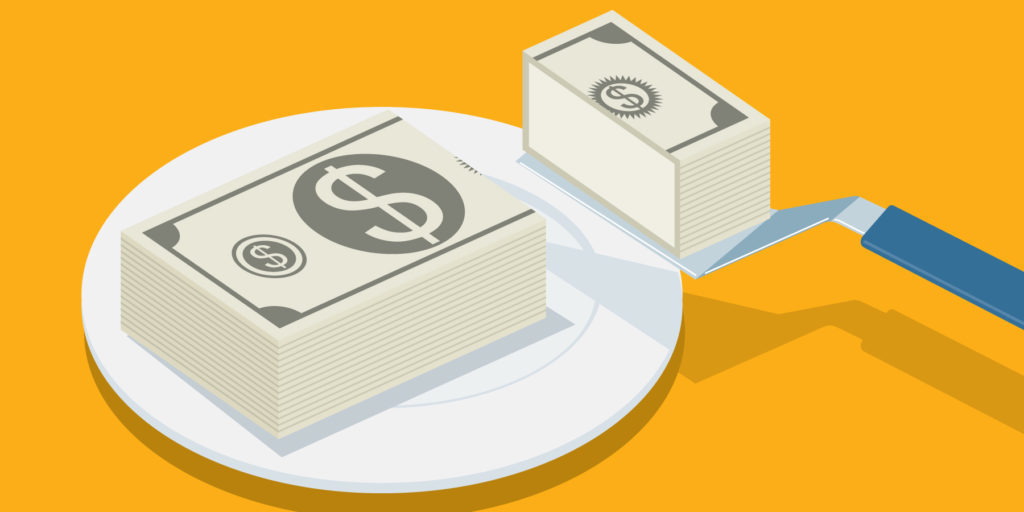For freelancers, doing your taxes can feel navigating a labyrinth, except the IRS is your Minotaur. Besides having to do them more often, you don’t have an employer to help make deductions for you, and there’s a maze of regulations that full-time employees simply don’t have to deal with.
Ace Callwood and his two co-founders—Justin Kauszler and Matt Russo—recently launched a new startup, Painless1099, with the goal of using software to make being a freelancer feel a little more like working for an employer—at least when it comes to taxes.
Callwood, Kauszler, and Russo started the project in Richmond, Virginia, and later relocated to Buffalo, New York, to participate in a startup incubator, 43 North. We talked to Callwood about what inspired the concept, how it works, and how he sees Painless1099 evolving.
What inspired Painless1099?
Justin [Kauszler] and I started our first business together in school, and we failed spectacularly. We were building this physical bike security unit. We were two students coming out of the school of business who had no business trying to build a physical product.
So we decided that the tech and web space made more sense. Justin taught himself how to code and we launched our first web property, Coffitivity. It plays the ambient sounds of a coffee shop on a desktop or phone, and it’s based on peer-review science out of the Journal of Consumer Research. The basic premise is that having a tiny bit of distraction while you work boosts your creativity, which is why people get so much work done and feel really good working in Starbucks or the neighborhood coffee shop.
That project blew up. We’re at just about four and a half million unique users. It’s this massive community. We have freelance designers, creatives, technologists, and others. What we’ve found is that that audience is very similar to us and had some of the same problems that we have with a lack of community and infrastructure.
The guys and I were all doing a fair amount of freelancing and creative work. Matt [Russo] had a great year freelancing but got blindsided by a $15,000 tax bill. We thought, as guys who build things for a living, it’s incumbent on us to take that [problem] upon our shoulders—to build what is now Painless1099.
How does Painless1099 work?
Painless1099 automates tax withholding for anybody earning 1099 incomes. In the “real job” world, your employer has already taken a chunk out for taxes, and you spend your paycheck however you please. Most people don’t know that, as a freelancer, there is not that chunk taken out for taxes. You’re expected to not only separate taxes for Uncle Sam, but remit that to him on a quarterly basis throughout the year.
A lot of people aren’t sure how to handle that, even when they’re aware there is a tax obligation. So Painless1099 is a “set it and forget it” platform that takes care of that whole process.
We issue our users an FDIC-insured bank account. It’s in their name, and it’s a bank account with our algorithm attached to it. Every time they get paid, their money hits Painless1099 first. We separate that based on their tax status, and we kick the rest out to their personal checking account of their choosing.
So, essentially, we mirror the W-2 withholding process for a demographic that until now wasn’t afforded that option.
How have people responded to the platform so far?
There was a big question for us [from the start]: Can we get people to open a new bank account in a new financial institution to automate this process?
What we found is that the response has been, emphatically, “Yes.” We studied the psychology of saving, which says the best way to save is to get money out of sight and out of mind before you feel like spending it, so we designed the platform to do that.
To date, we’ve put just over $1 million through Painless1099 accounts. We’ve been able to put a high volume of deposits through the system on a regular basis, and we’re excited to continue scaling.
So right now Painless1099 is free—will it stay that way?
The plan to keep it free until we get to a place where we feel really good about charging the user for the product.
We’re driving a ton of value right now, but I think we’ll see a shift at some point. Even then, there will be ample heads up for anybody who will be affected by that change.
What’s your long-term vision?
Taxes are just the tip of the iceberg. We see a huge opportunity to really automate the financial experience of the freelance class, and that’s a growing demographic. We see that there is very little infrastructure for them to manage not only “front of the house” client work, but kind of “back office” tasks as well—which becomes cumbersome, to say the least.
I think the next big opportunity is that rainy day fund. There’s no opportunity to be paid unemployment as a 1099 contractor. What if something happens? [Say] I’m an Uber driver, I wrecked my car. Hopefully insurance picks up the whole tab, or heaven forbid I’m a writer or designer and I break my arm, you know? That’s a very real thing that can happen, and there’s very little recourse or protection against that. So that’s the second piece for us.
Then beyond that, you start to look at some other products and services that most people aren’t either aware of or sure how to navigate, one of which is retirement. That’s the grand vision for us.
This interview has been edited for clarity.
